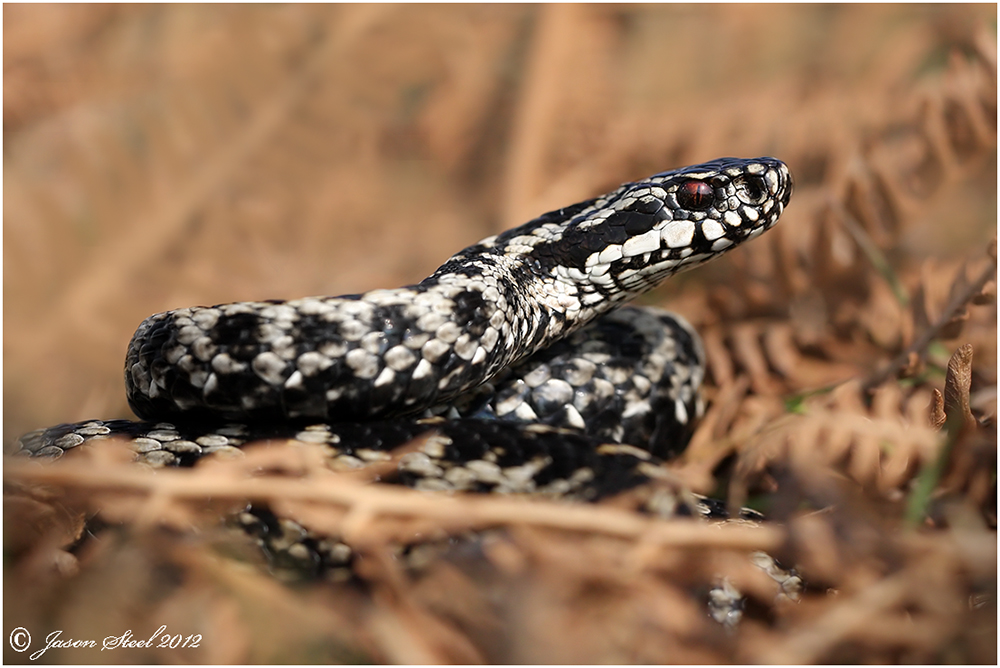
Adult male Adder.
A recently sloughed male Adder shows off his striking high-contrast mating colours in early Spring. At this time of year the male Adder's mating colours are distinctive and may help to attract the attention of the female Adders but this Adder is now more vulnerable to predation because his camouflage is poorer and he is easily spotted against his surroundings.
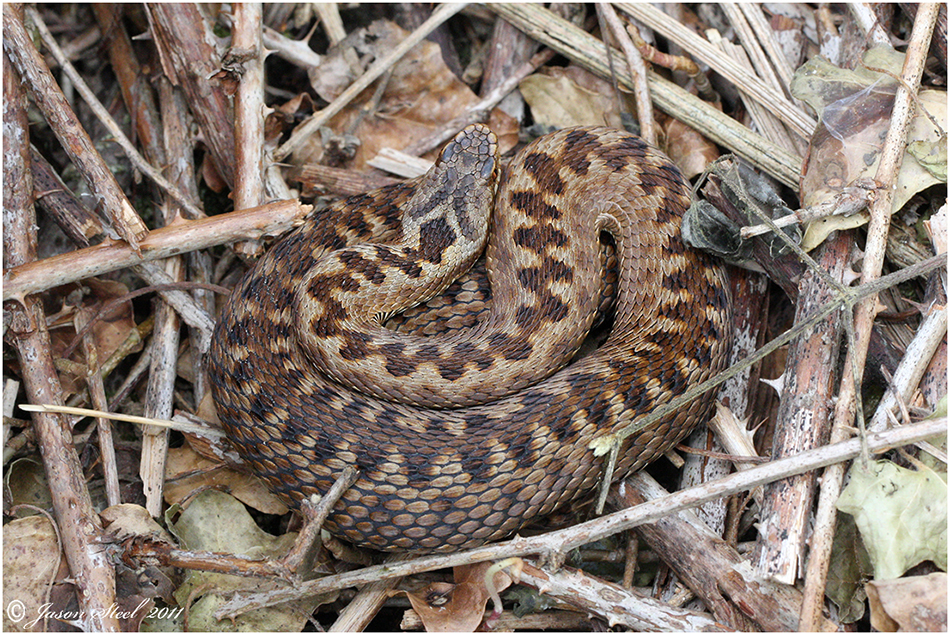
Adult female Adder.
This female Adder is clearly showing signs of having just eaten a large meal. The stomach is noticeably swollen and there are clear gaps between her usually overlapping scales. Like all snakes Adders have a very powerful digestive system. Because snakes do not chew their food meals are swallowed whole leaving the digestive system to completely break down the food. After eating Adders will normally lay dormant for 24 hours or more depending on the size of the meal. During this time all the snakes energy is used to digest their prey. If overly disturbed during this period an Adder may often regurgitate the meal in order for it to flee from attack. This can be both stressful and harmful to the snake. If undisturbed the enzymes in the digestive system are capable of digesting every part of the snakes prey including flesh, fur, bones and teeth. Nothing is wasted.
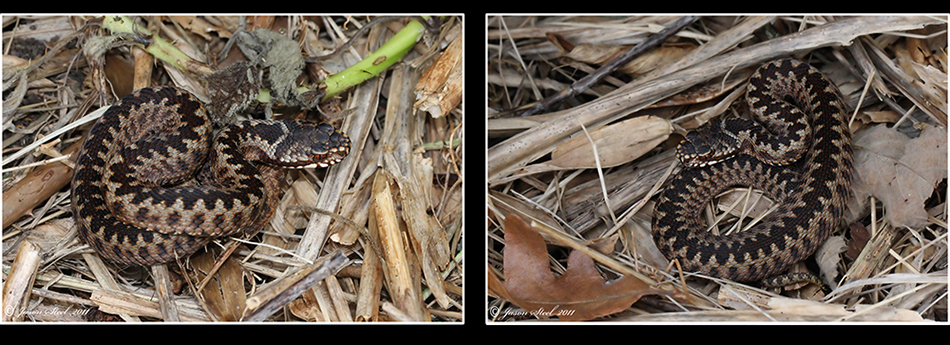
Neonate Adders.
Neonate Adders are born in late August or early September and will usually not have their first meal until the following Spring. Because of this a long harsh winter can result in some of the neonates failing to survive their first hibernation. It can be particularly dangerous to the young Adders if the weather warms up during the winter and then turns very cold again. Adders may come out of hibernation during a mild spell during winter and can be caught out by freezing conditions if the weather turns very cold again.
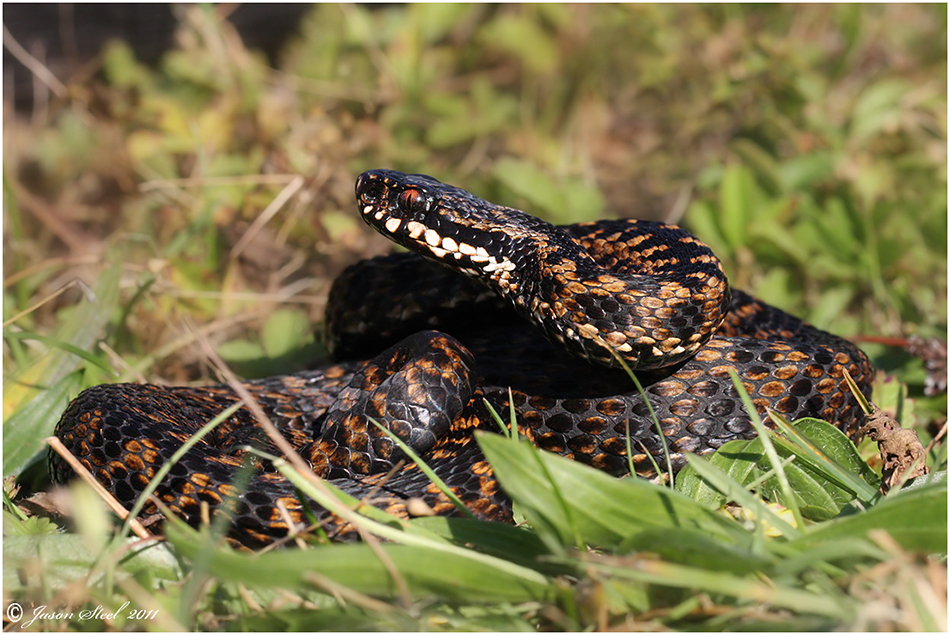
Adult male Adder.
In 2002 a 61-year-old arthritis sufferer was bitten on the hand by an Adder in his garden in the UK. He claimed that the venom from the Adder actually eased the arthritis pain in his joints for several months following the bite. Snake venom is being extensively studied by toxicologists around the world and it could well be used for treating many medical conditions at some point in the future including cancer should medical research prove it to be effective. Snake venom is already being used to produce drugs used for treating high blood pressure and other cardiovascular disorders.
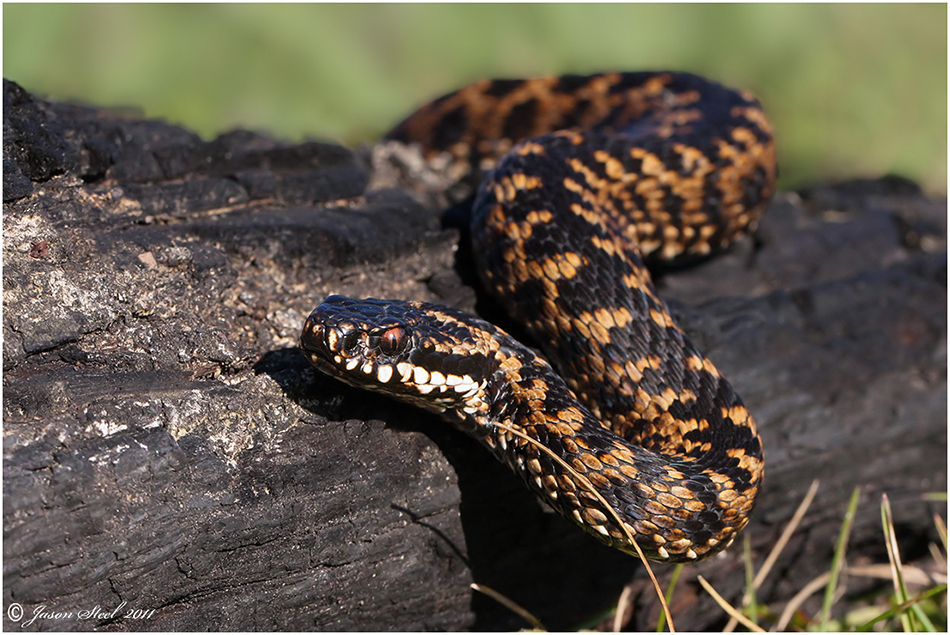
Adult male Adder.
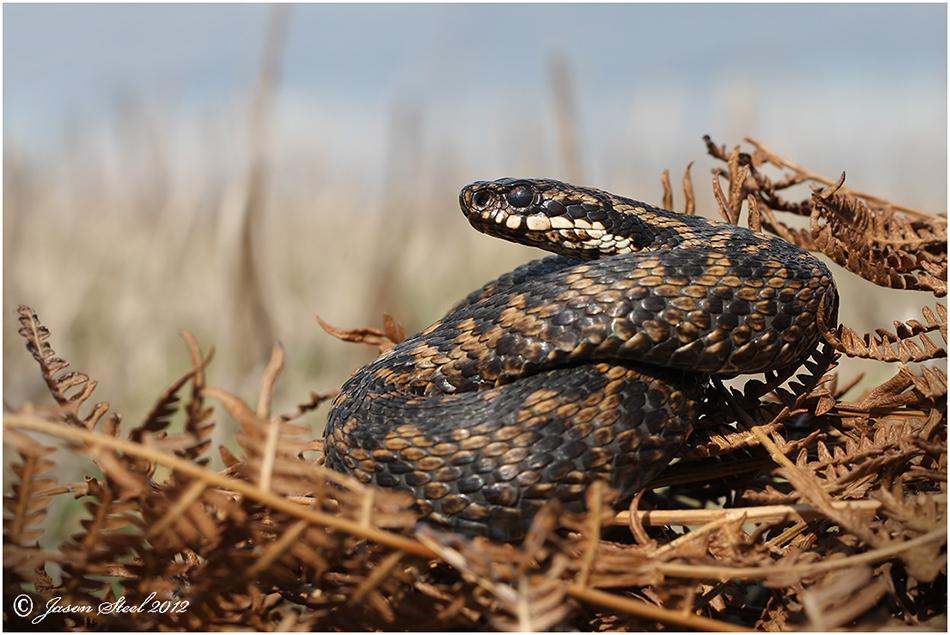
Adult male Adder.
Male Adders usually emerge from hibernation usually 2-4 weeks before the females. During this time the males will spend as much time as the weather permits basking in the sunshine to restore lost energy from their winter sleep. Males can often be seen during March in good numbers. Upon emerging from hibernation they stay pretty close to the hibernaculum and are generally easier to photograph at this time of year due to their reluctance to move off. Once the females have emerged and mating has taken place the males will disperse and can then be particularly difficult to find and photograph. The females however tend to usually stay fairly close to the hibernaculum throughout the year.
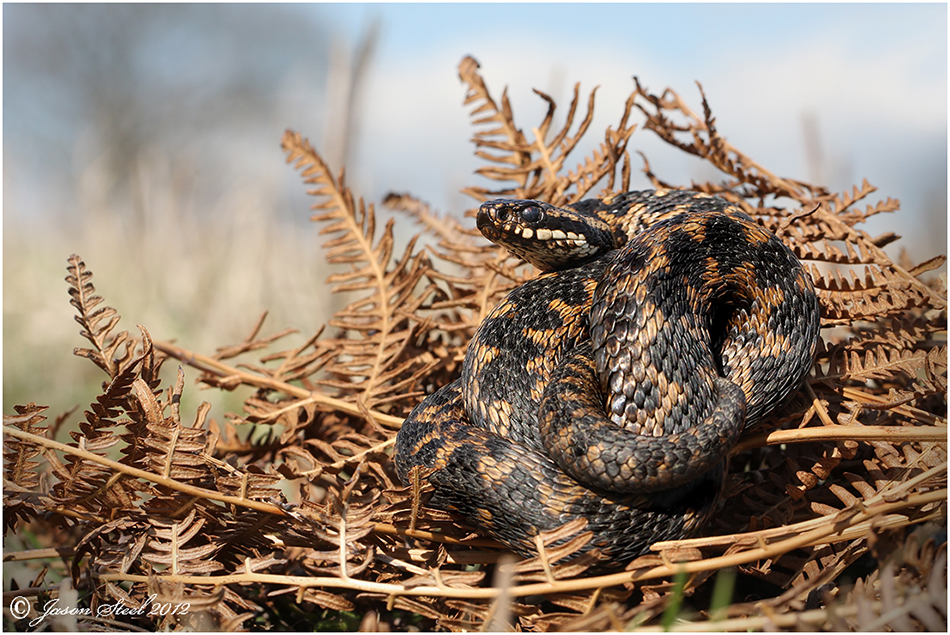
Adult male Adder.
Adder populations are monitored and recorded by volunteers across the country who report their findings to their local county recorder and all records are entered into a national database. Adders are often monitored by placing artificial refugia such as green-painted sheets of corrugated tin on the edge of woodland and heathland sites. These "tins" warm up quicker in the sun than the surrounding areas and they attract reptiles that use them to bask on or under.
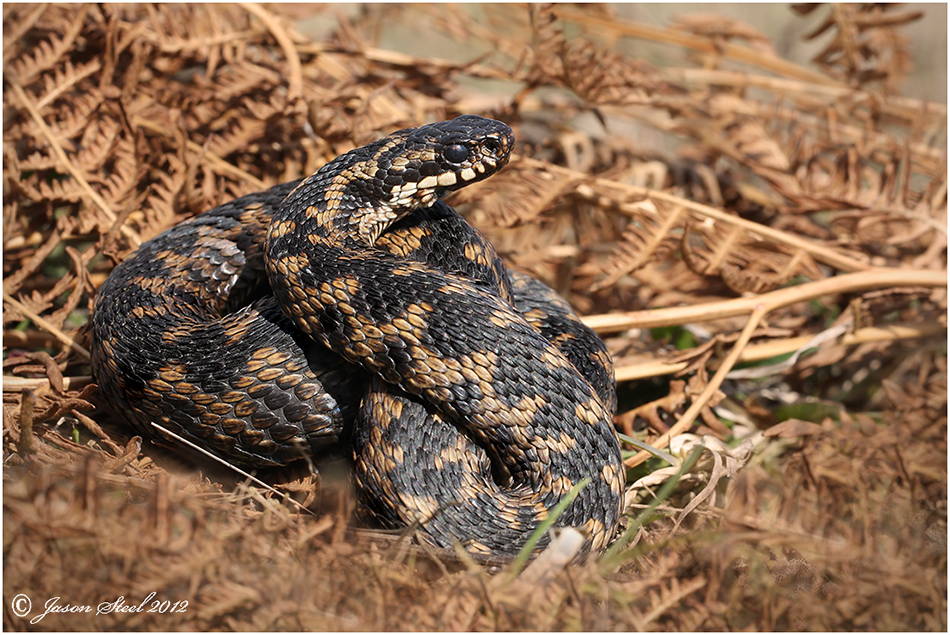
Adult male Adder.
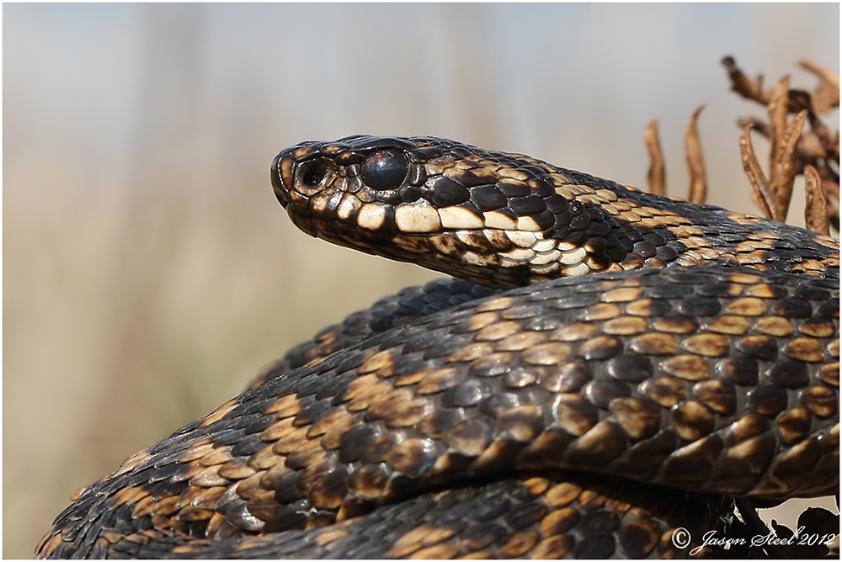
Adult male Adder.
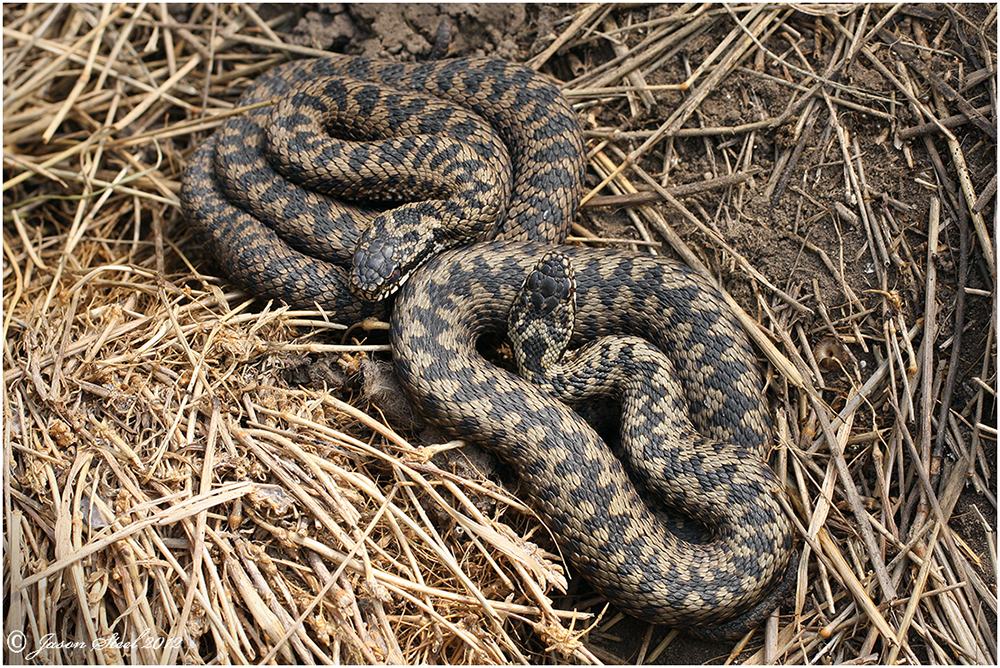
Adult male Adders.
Fresh from hibernation male Adders are often found together sharing the heat of refugia tins. In a few weeks time these male Adders could be competing with each other by wrestling for the attention of the female Adders.
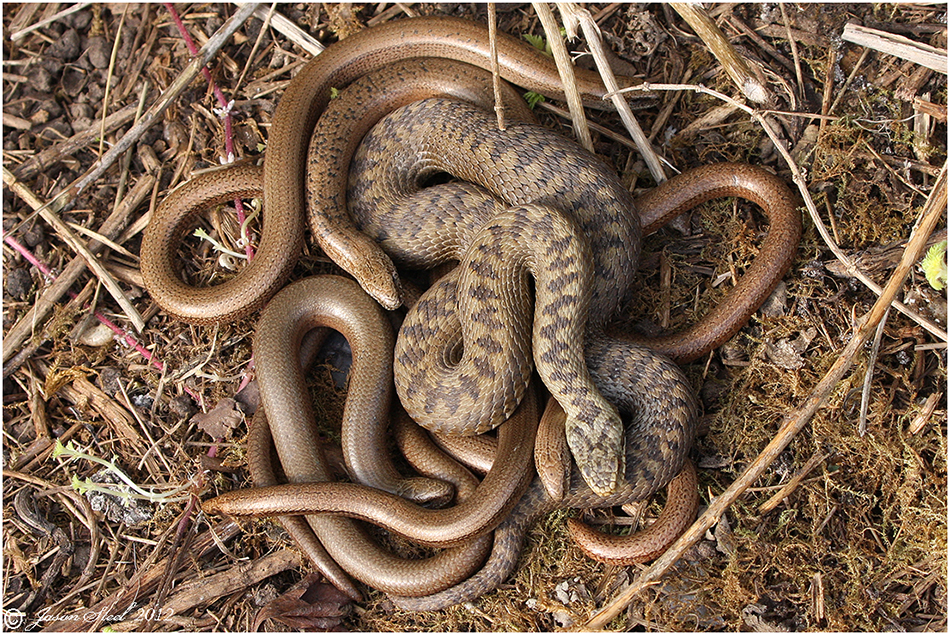
Photos taken "in-situ" of an adult female Adder and several large Slow Worms, found under a refugia tin in 2021.
Adders are often found warming up together with other adders and are sometimes found coiled up alongside completely different species of reptiles altogether. This female Adder was the first that I observed emerged from hibernation in 2012 and was found on the 22nd March several weeks after I observed my first male Adder on the 25th February 2012. This photo was taken completely "in-situ" showing the female Adder found sharing the warmth under a survey tin with five adult male Slow Worms.
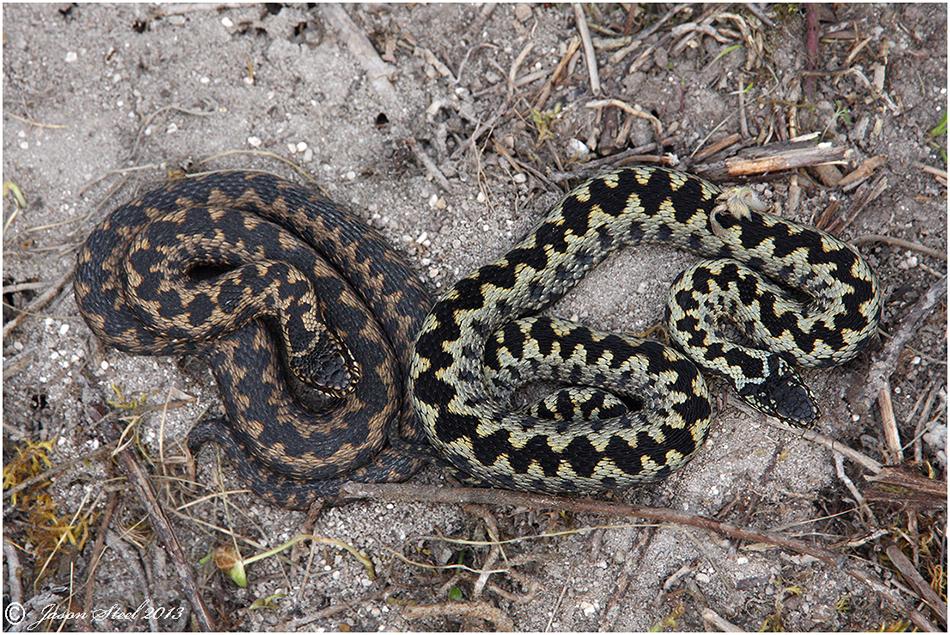
Adult male Adders.
This photo shows the difference between a pre-slough male Adder (on the left) and a post-slough male Adder (on the right) in the breeding season (April). These were coiled up together under a refugia tin.
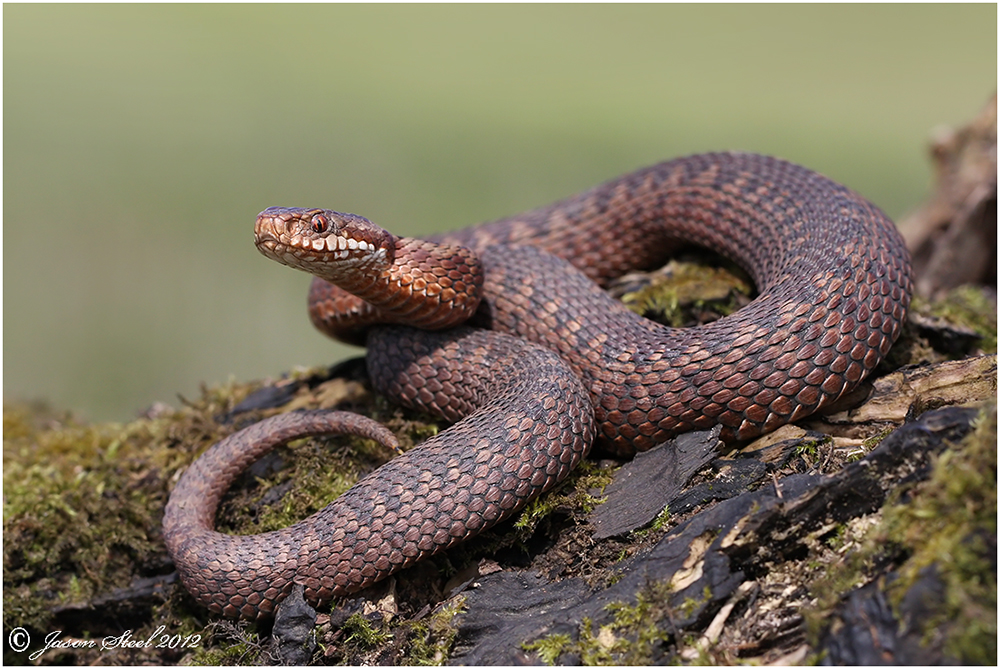
Adult female Adder.
Adders can often be found on the South-facing edge of woodland especially on a slope where they are exposed to good levels of sunshine. In order to get close to adders in is important to tread very gently because although Adders have limited hearing they can pick up the slightest vibrations from the ground. Approach with the sun behind you but be careful where your shadow is landing. Travelling downwind is also advisable as Adders have an excellent sense of smell and like most snakes use this as their primary sense.
It is often reported that snakes are deaf because they don't have ears. However an article published in 2020 by the Rattlesnake Conservancy Group revealed that snakes do possess the middle-ear bone called the columella which allows them to have limited hearing between the ranges of 80 - 1000 Hz.
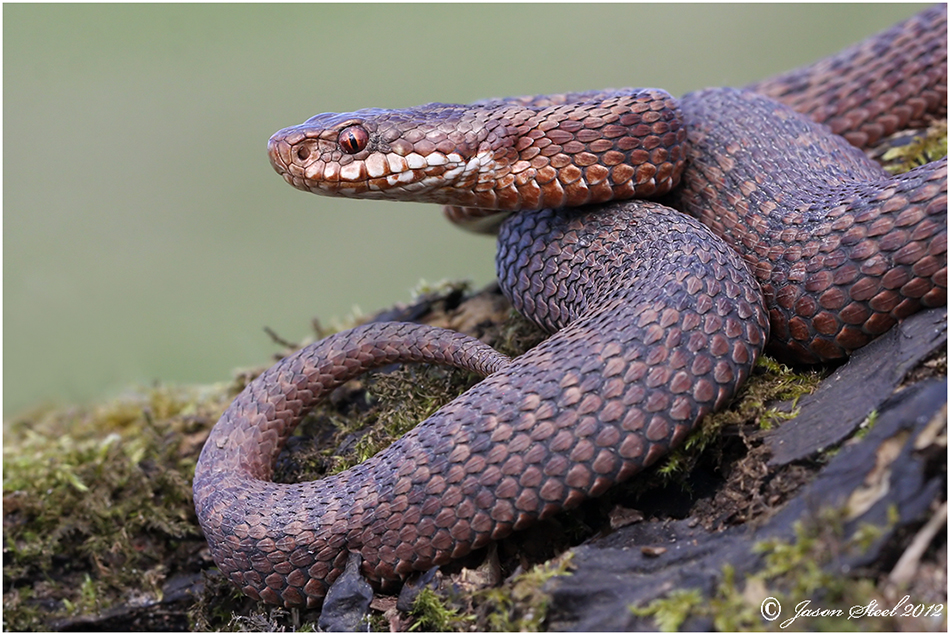
Adult female Adder.
Female Adders breed in the Spring and will often not feed until after giving birth in August. This results in the Adder having just 6-8 weeks to find, catch and eat enough food to build up the necessary energy reserves to survive several months of hibernation. An early onset of winter or a late Spring can result in these hibernating Adders failing to survive a harsh winter.
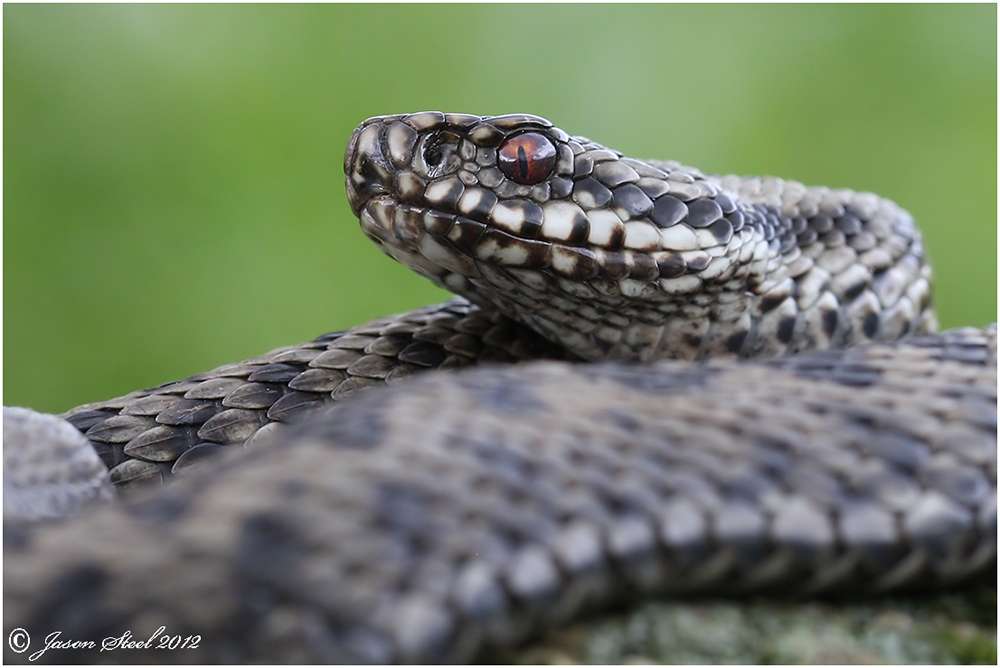
Adult male Adder.
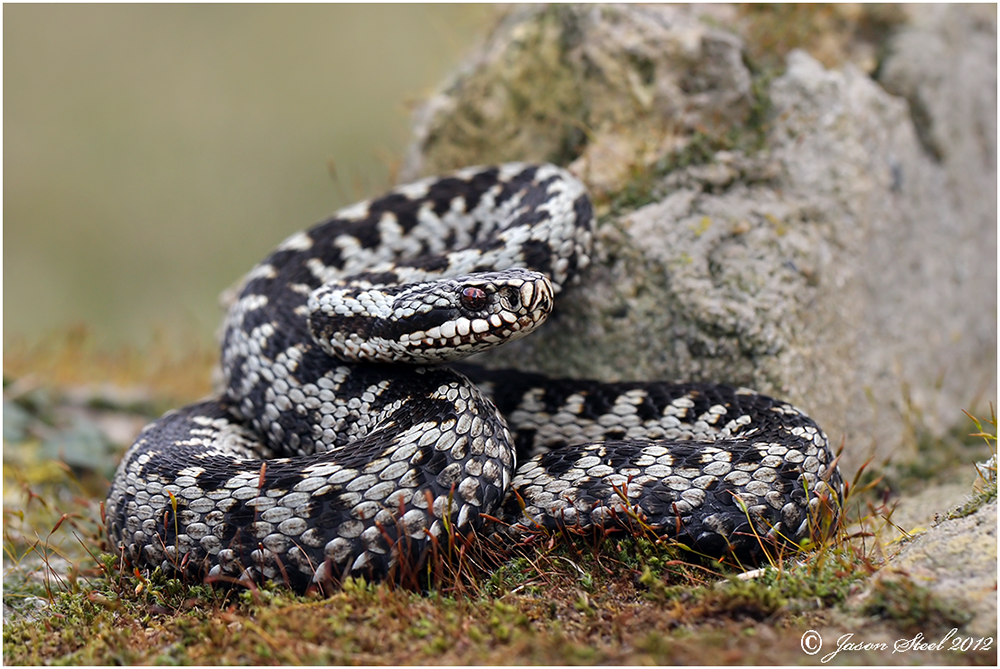
Adult male Adder.
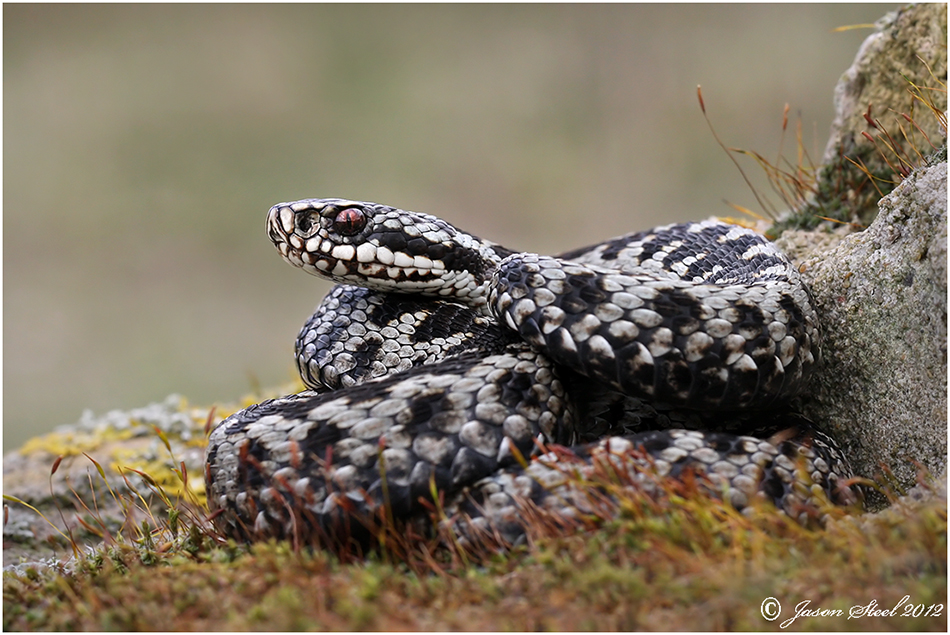
Adult male Adder.
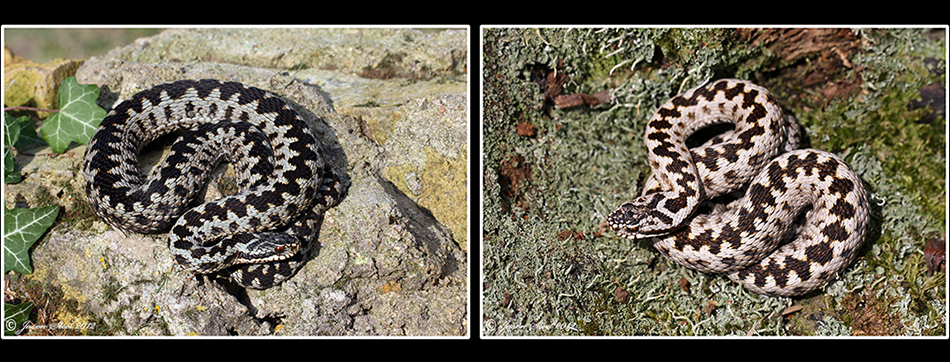
Adult male Adders.
Two male Adders photographed during the mating season in April showing different high-contrast mating colours. One with a light silvery-blue base colour and the other with a cream coloured base.
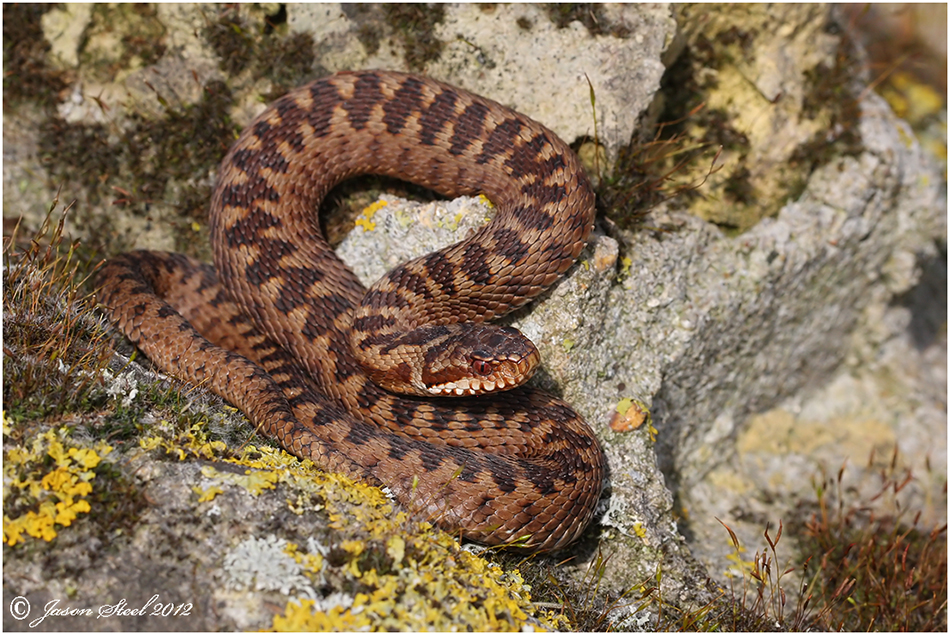
Sub-adult female Adder.
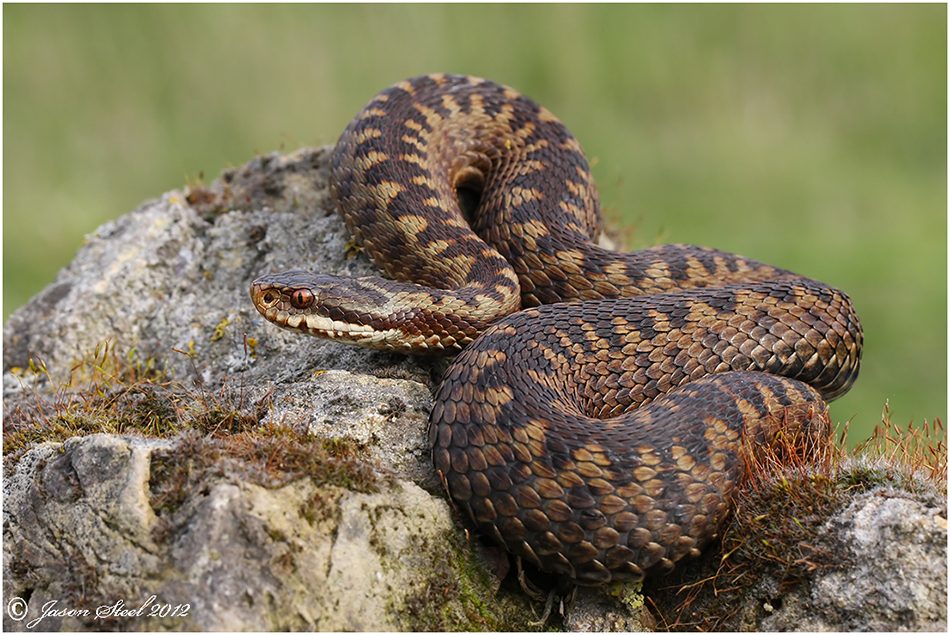
Adult female Adder.
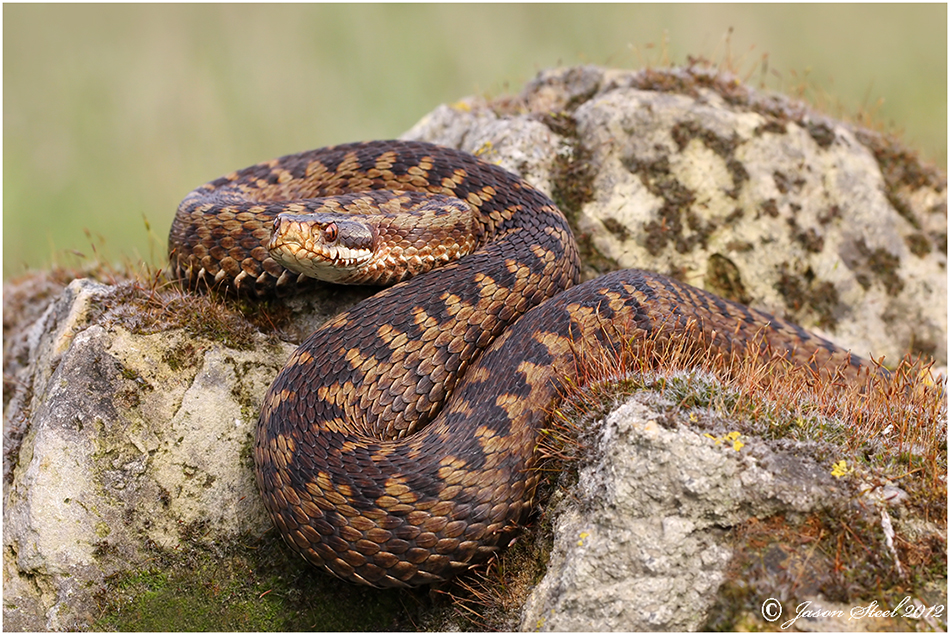
Adult female Adder.
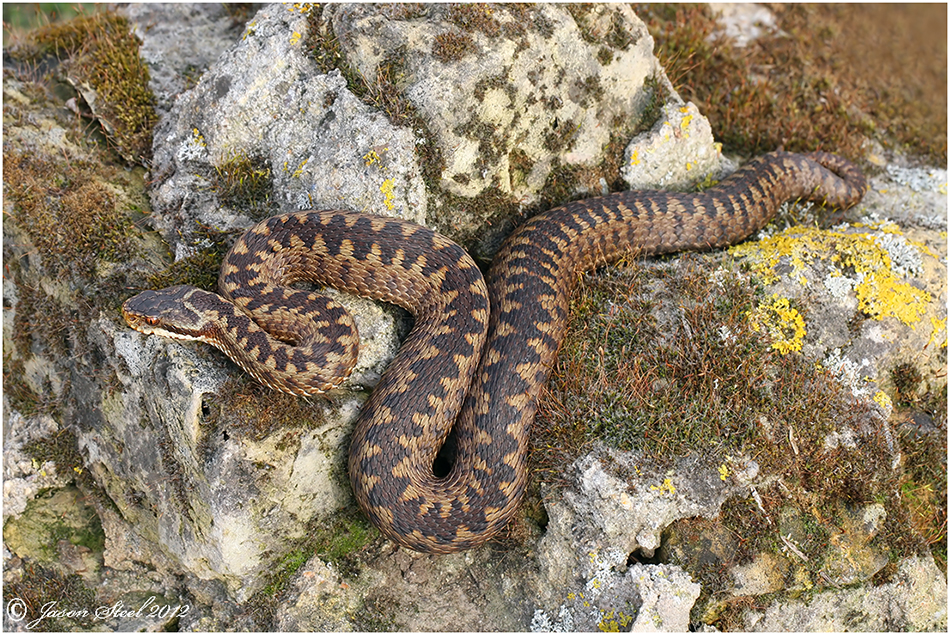
Adult female Adder.
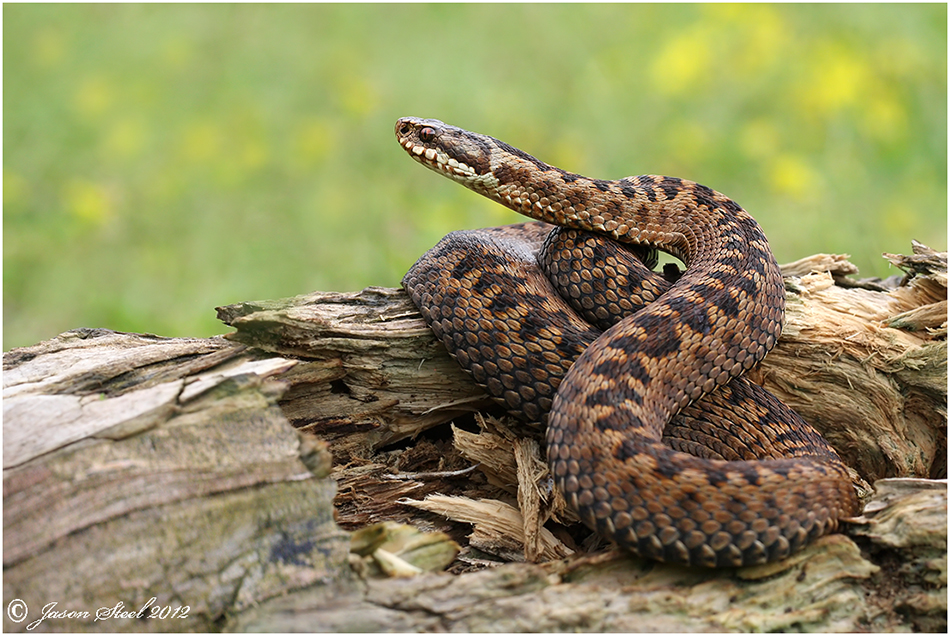
Adult female Adder, photographed at a site in Kent, 2012.
This photo went on to feature on the cover of the RSPB's "Spotlight on Snakes" book by Jules Howard. - LINK
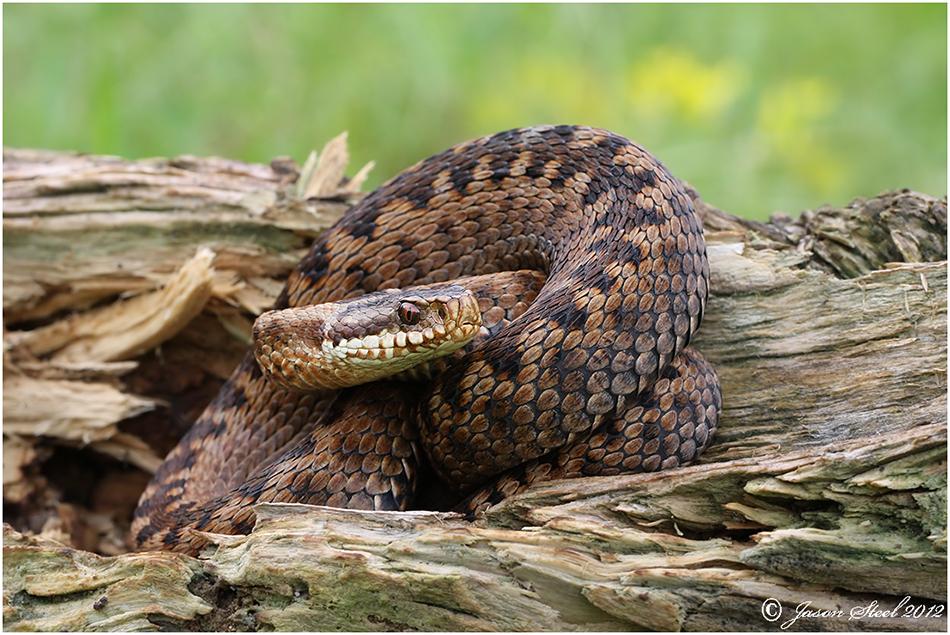
Adult female Adder.
There was a very unusual incident reported in 2013 by a Committee member of KRAG who witnessed and photographed an adult Adder feign death. The snake was being harassed by a fox and as the person approached the fox ran off. Closer inspection of the Adder found it to be laying upside down with its head hidden from danger. The Adder remained in this position for several minutes before righting itself and slithering off into the nearby undergrowth. Read the account with photographs here. Adders have also been known on occasion to musk when handled by people.
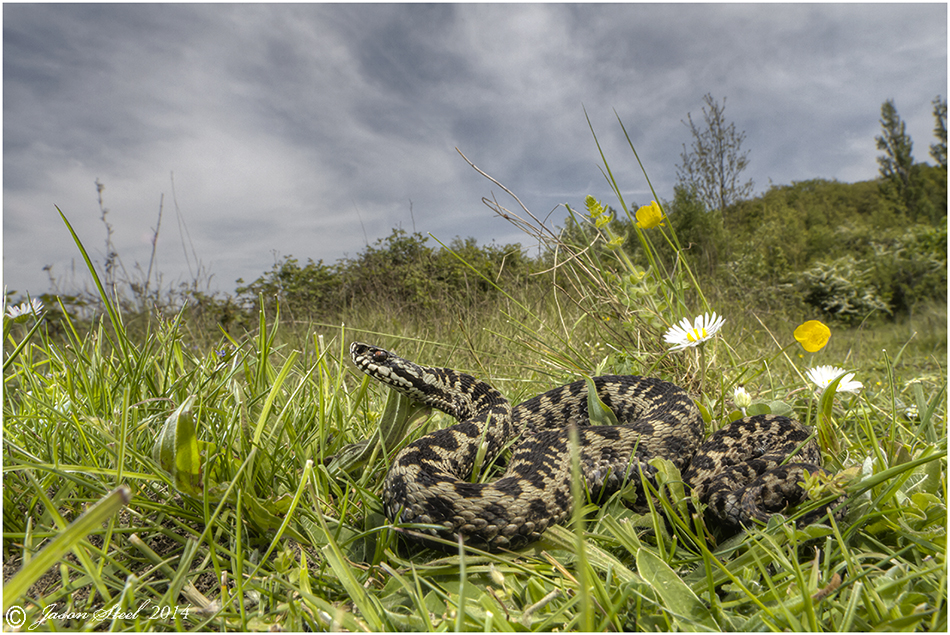
Adult male Adder.
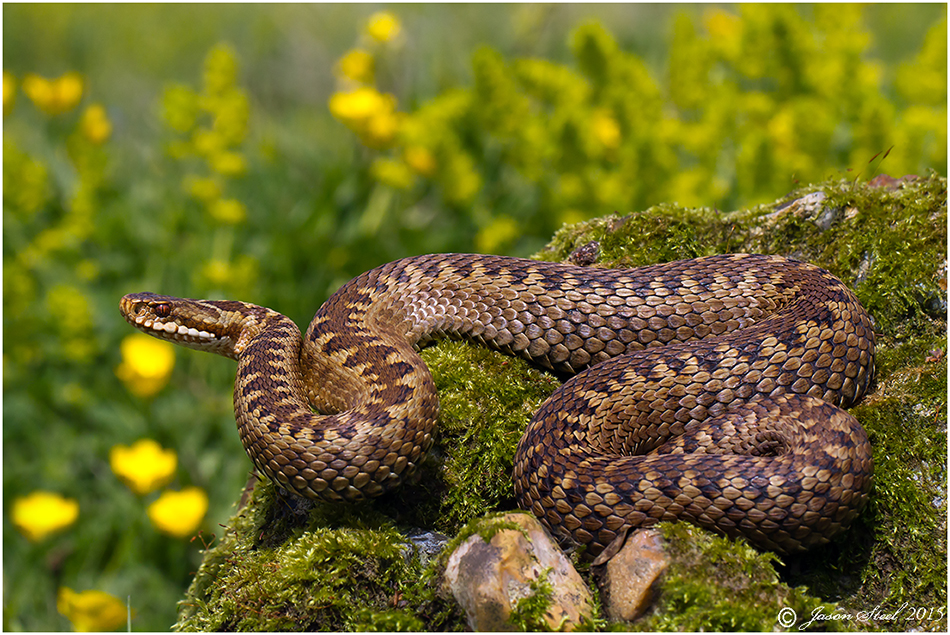
Adult female Adder.

Adult female Adder.
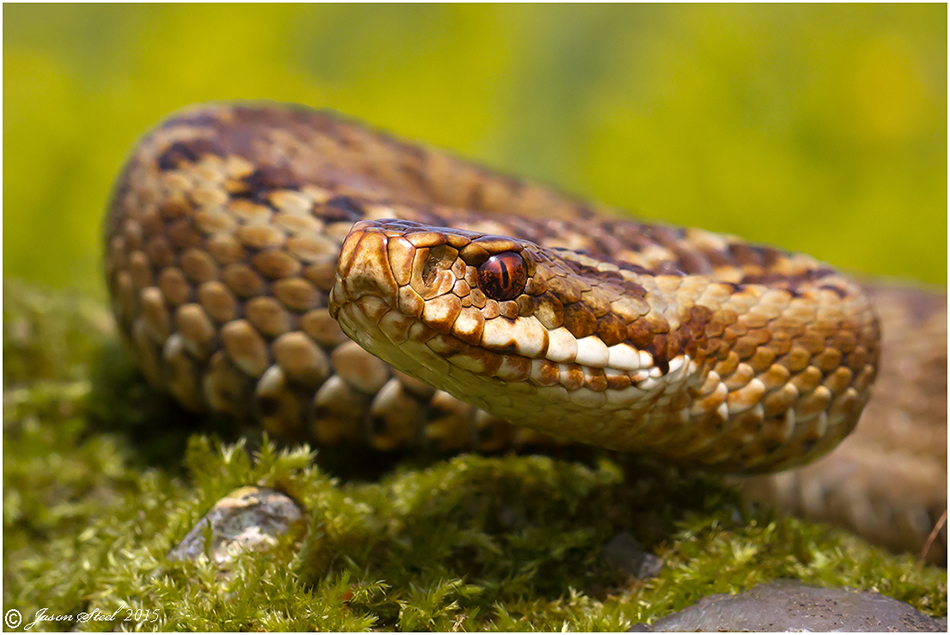
Adult female Adder.
Unlike Grass Snakes, the Adder very rarely takes to water. But like all snakes if necessary it can swim across water in search of food or to evade predators. Unlike Grass Snakes, Adders tend to swim on top of the water, as much as possible, rather than in it. This unusual occurrence was witnessed and photographed in this article by the BBC: Adder caught swimming
On June 13th 2021 there was a report by the Welsh newspaper, the Daily Post, of another Adder found swimming in the sea by Anglesey Beach. LINK 1 LINK 2 LINK 3
An Adder was also photographed swimming in the middle of the Norfolk Broads in 2019: LINK
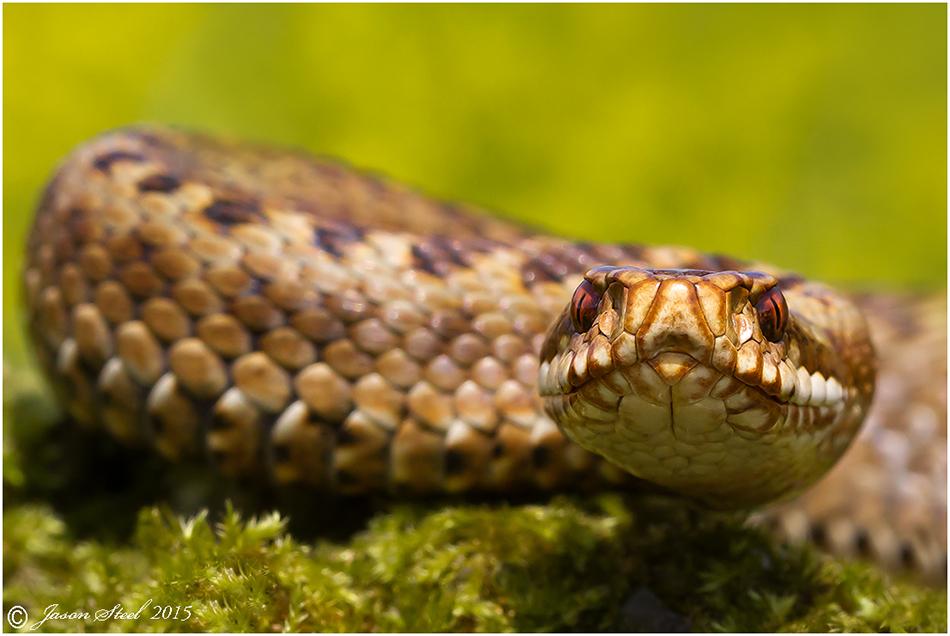
Adult female Adder.
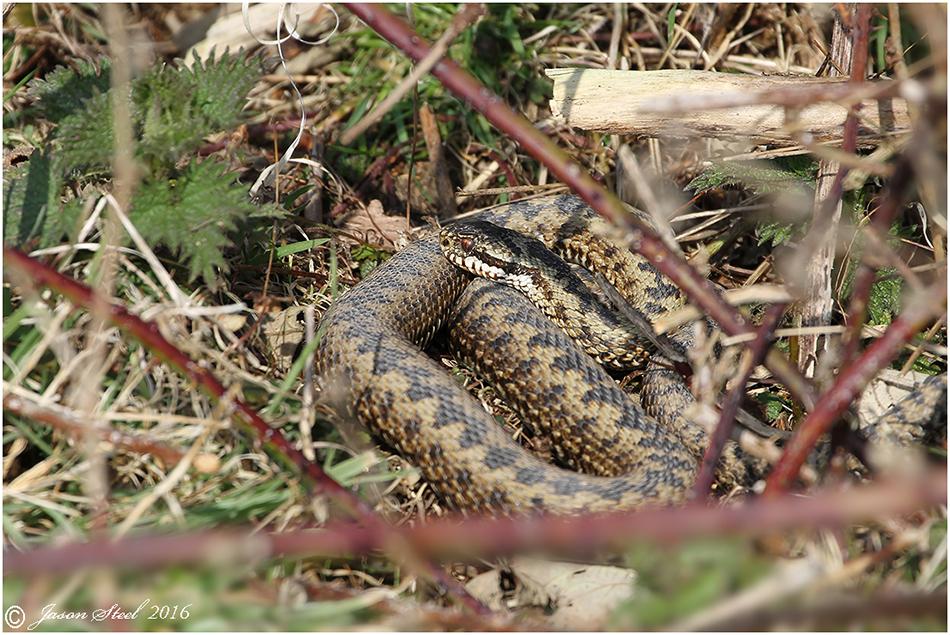
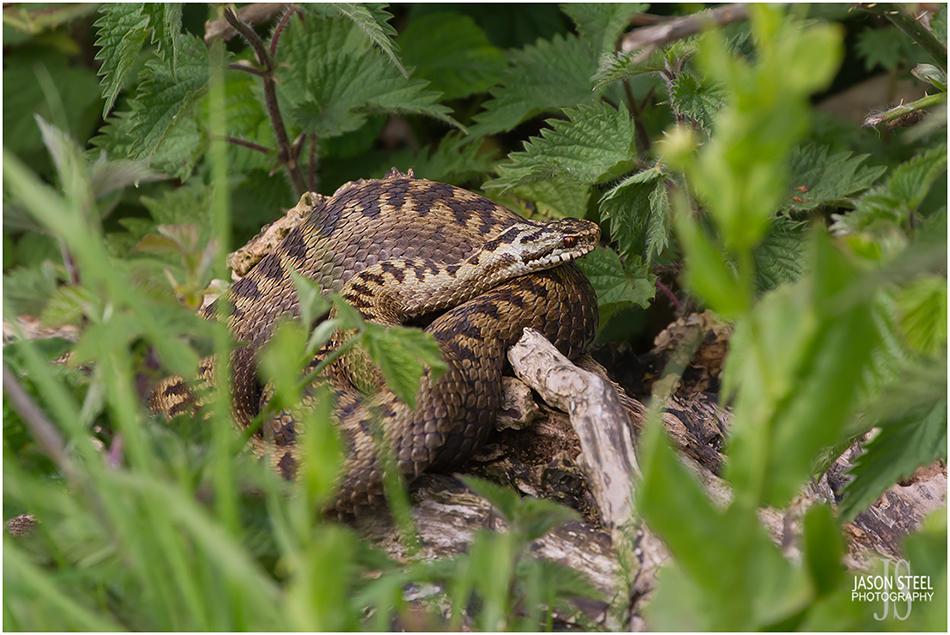
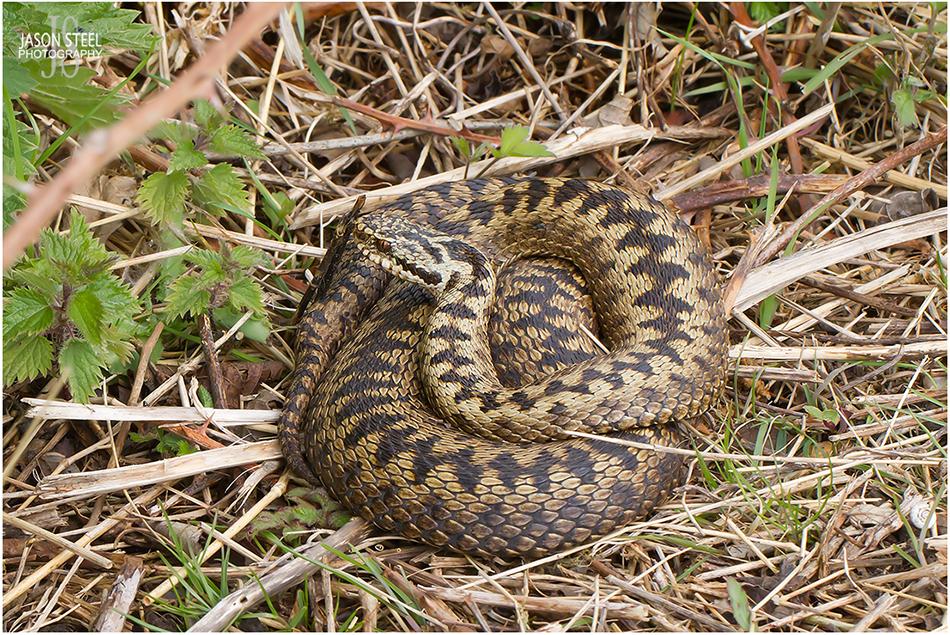
All photos on this page were taken using the Canon 40D / 7D Cameras and Canon EF 100mm f/2.8 L Macro IS USM / Canon EF 70-300 f/4-5.6 L / Sigma 14mm 2.8 Wide-Angle lenses